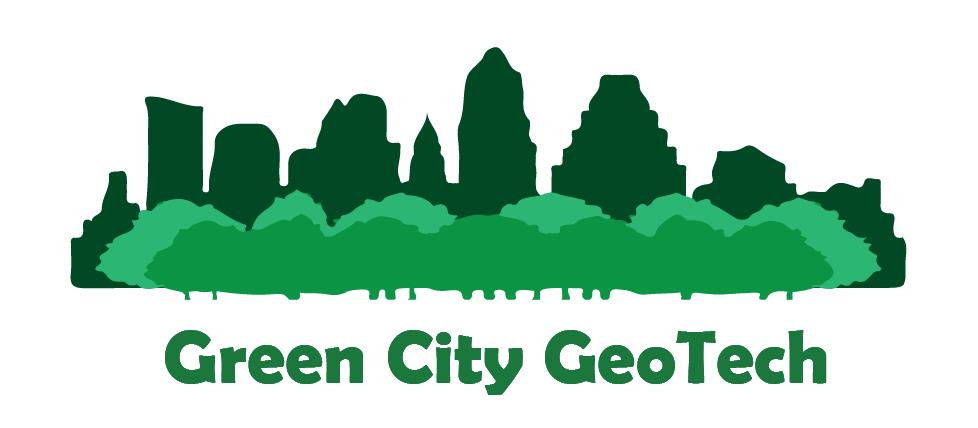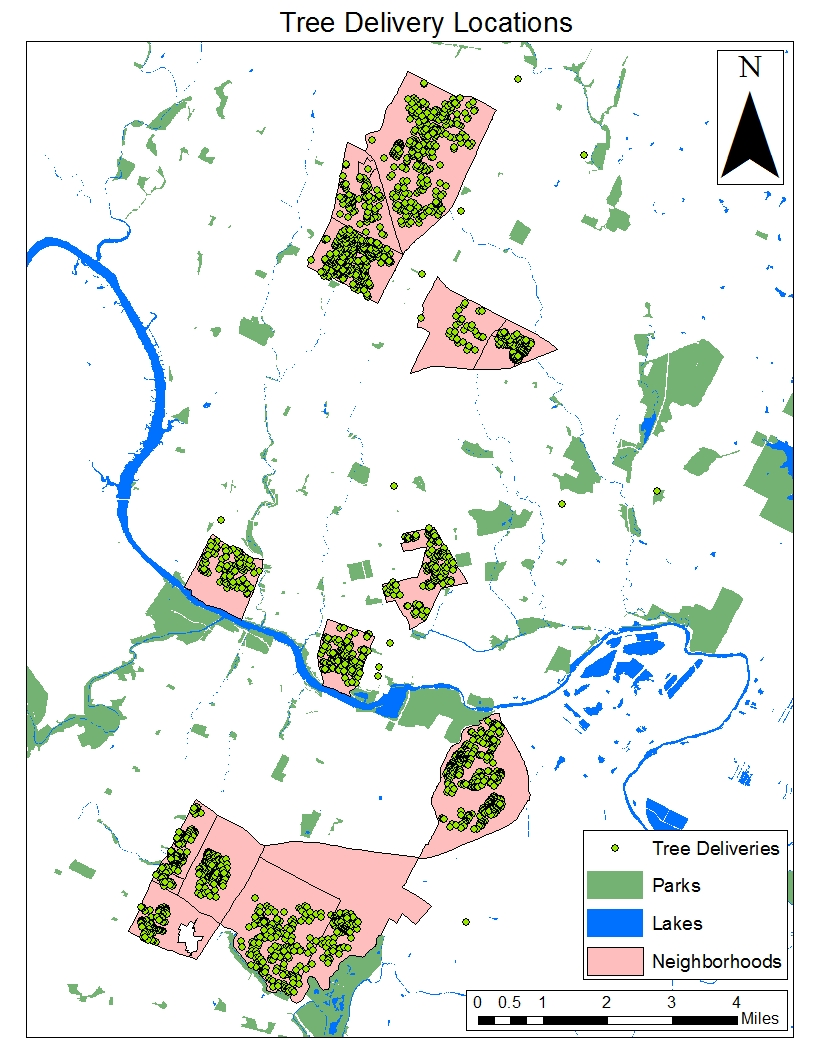
Greenbelt GIS Consulting
Summary
In 2006, the City of Austin implemented the Austin Community Tree (ACT) Program to mitigate the city’s urban heat island effect (UHI). Every year, the City of Austin selects two neighborhoods and gives its residents the opportunity to receive trees to plant in their yards, free of charge. To date, 2,381 of the selected residences from 14 neighborhoods have accepted ACT Program trees and played a part in revitalizing the city’s canopy cover. Green City GeoTech’s task has been to evaluate how effective the program has been in combatting UHI by improving shade, carbon sequestration, and electrical energy conservation and to extrapolate their potential growth.
Purpose
The purpose of this study is to quantify the benefits provided by trees distributed to residents by 1) analyzing tree canopy growth between 2006 and 2010, 2) analyzing the amount of carbon sequestered and electrical energy conserved from 2006 to 2015, and 3) extrapolating future canopy growth to 2015 and 2025 as a means of anticipating continued benefits. Green City GeoTech produced a map book for the City of Austin and its residents in order to visualize the spatial distribution of ACT Program trees’ locations and the results of the analyses.
Methods
The first task was performed by calculating the gain and loss of canopy between 2006 and 2010 and using the results to find the percentage of net gain. To measure the significance of this gain, a Wilcoxon Signed Rank test was performed.
In the second task, calculations by the National Tree Benefit Calculator (NTBC)—which represent the total benefits of one tree in one year—were multiplied by the number of trees planted at each address. The resulting value was then multiplied by the number of years the trees had been planted and allowed to grow.
To accomplish the third task, the area that the trees’ canopies were predicted to grow by the NTBC was multiplied by the number of years between planting and 2015 and 2025.
The map book features the results of the first three analyses for each neighborhood and a table features the results of the last. Canopy growth between 2006 and 2010 is overlain with ACT tree delivery locations to visualize the relationship between ACT tree plantings and increase in shade. Carbon sequestration and energy conservation at each address are shown in circular graduated symbols.
Conclusion
Green City GeoTech’s goal has been to provide the City of Austin and its residents with an accurate assessment of how much they have profited by their investment in the ACT Program. So far, canopy has increased by 16.5%, 173,000 pounds of carbon have been sequestered, 69,000 kilowatt hours of energy have been conserved, and the canopy area that ACT Program trees alone contribute is expected to double in the next ten years. Thanks to the ACT Program, Austin is shadier, cooler, and less affected by greenhouse gases than it would be otherwise.

NeighborWoods Trees as of 2014